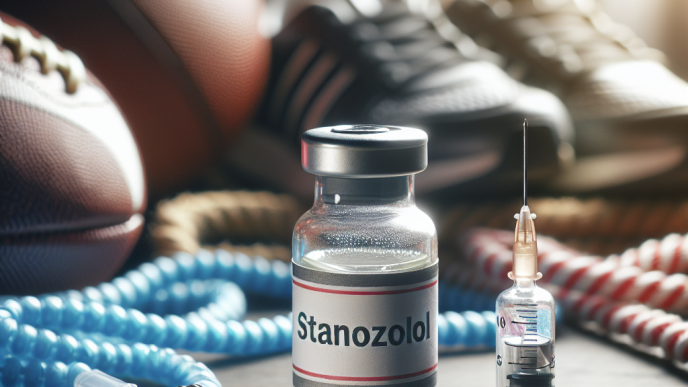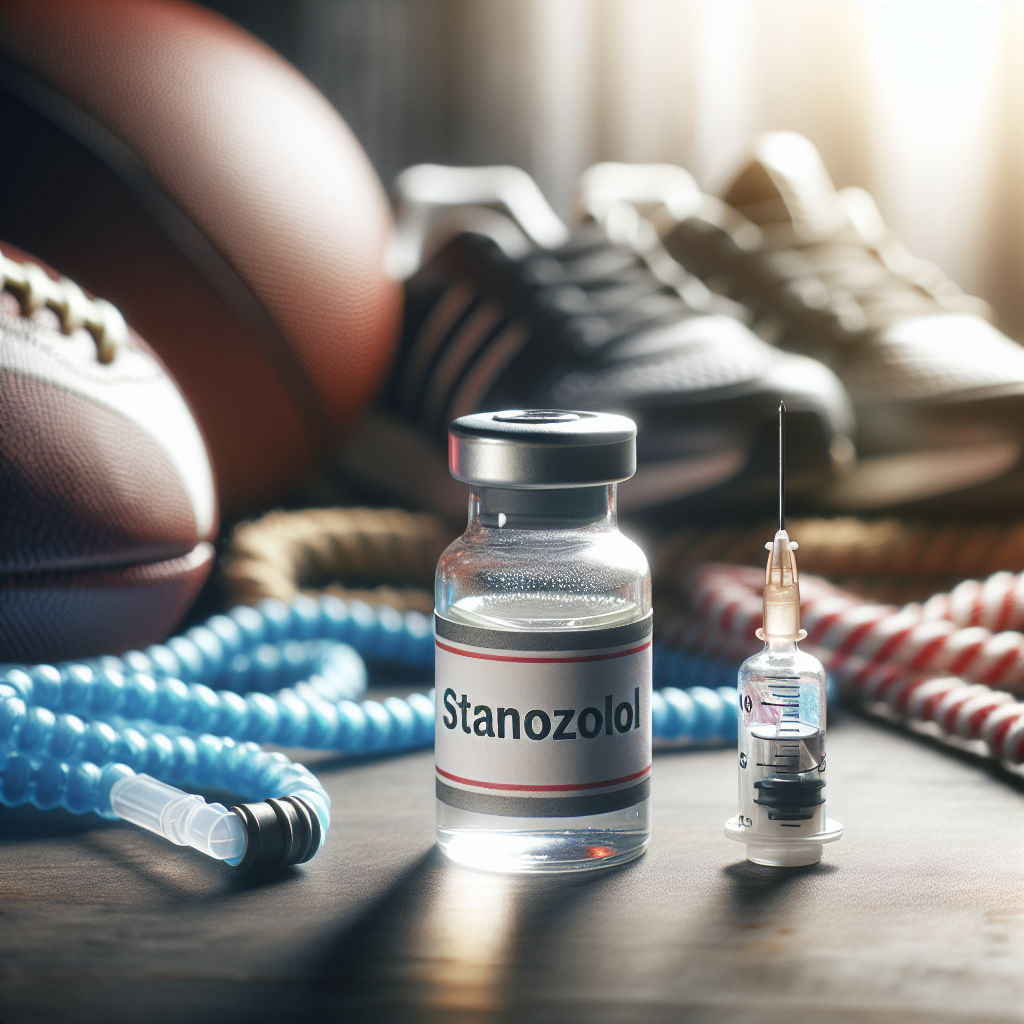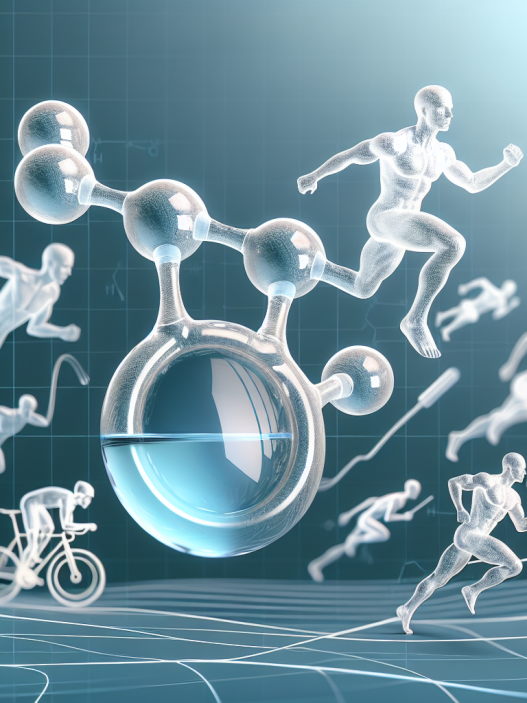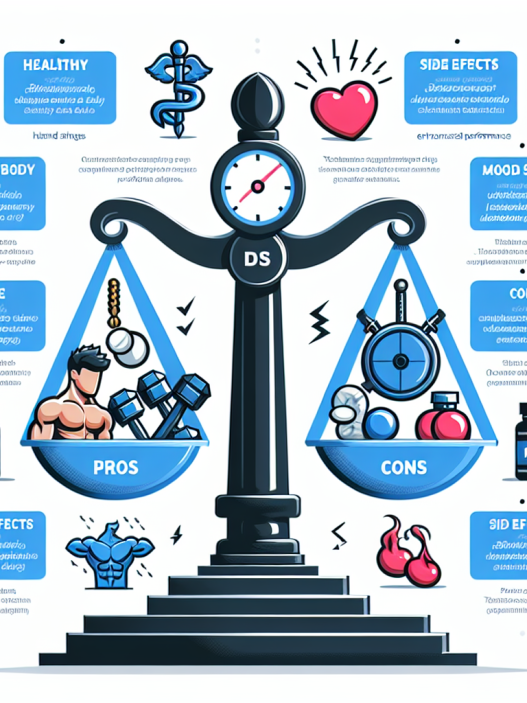-
Table of Contents
Injectable Stanozolol: A Potent Steroid for Improving Sports Performance
Sports performance is a highly competitive field, with athletes constantly seeking ways to enhance their physical abilities and gain an edge over their opponents. While proper training and nutrition play a crucial role in achieving peak performance, some athletes turn to performance-enhancing drugs to gain an advantage. One such drug is injectable stanozolol, a potent steroid that has been used for decades to improve sports performance. In this article, we will explore the pharmacokinetics and pharmacodynamics of injectable stanozolol and its effects on sports performance.
The History of Injectable Stanozolol
Stanozolol, also known by its brand name Winstrol, was first developed in the 1950s by Winthrop Laboratories. It was initially used to treat medical conditions such as anemia and hereditary angioedema. However, it wasn’t long before its performance-enhancing effects were discovered, and it became a popular drug among athletes.
Injectable stanozolol was first introduced in the 1960s and quickly gained popularity due to its ability to be injected rather than taken orally. This allowed for a longer half-life and more sustained effects, making it a preferred choice for athletes looking to improve their performance. It has since been banned by most sports organizations, including the International Olympic Committee, due to its potential for abuse and unfair advantage.
Pharmacokinetics of Injectable Stanozolol
Injectable stanozolol is a synthetic derivative of testosterone, with a modified structure that enhances its anabolic properties while reducing its androgenic effects. It is administered via intramuscular injection and has a half-life of approximately 24 hours. This means that it stays in the body for a longer period, allowing for sustained effects.
Once injected, stanozolol is rapidly absorbed into the bloodstream and binds to androgen receptors in various tissues, including muscle and bone. It is then metabolized by the liver and excreted in the urine. The rate of metabolism varies from person to person, but on average, it takes 3-4 weeks for stanozolol to be completely eliminated from the body.
Pharmacodynamics of Injectable Stanozolol
The primary mechanism of action of injectable stanozolol is its ability to increase protein synthesis and nitrogen retention in the body. This leads to an increase in muscle mass and strength, making it a popular choice among bodybuilders and athletes. It also has anti-catabolic effects, meaning it can prevent the breakdown of muscle tissue during intense training or competition.
Additionally, stanozolol has been shown to increase red blood cell production, leading to improved oxygen delivery to muscles. This can result in increased endurance and stamina, allowing athletes to push themselves harder and longer during training or competition.
Effects on Sports Performance
The use of injectable stanozolol has been linked to significant improvements in sports performance, particularly in strength and power-based activities. Studies have shown that it can increase muscle mass by up to 10% and improve strength by 20-30% in as little as 6-8 weeks of use (Kicman & Gower, 2003). This makes it a popular choice among athletes in sports such as weightlifting, sprinting, and baseball.
Furthermore, stanozolol has been shown to have a positive impact on recovery time, allowing athletes to train more frequently and intensely without experiencing fatigue or overtraining. This can lead to faster gains in muscle mass and strength, giving athletes a significant advantage over their competitors.
Side Effects and Risks
Like all performance-enhancing drugs, injectable stanozolol comes with potential side effects and risks. The most common side effects include acne, hair loss, and changes in cholesterol levels. It can also cause liver damage, particularly when used in high doses or for extended periods. Therefore, it is essential to use stanozolol under the supervision of a medical professional and to follow recommended dosages and cycles.
Moreover, stanozolol has been linked to cardiovascular issues, such as an increased risk of heart attack and stroke. This is due to its ability to increase red blood cell production, which can lead to thickening of the blood and potential clotting. Athletes with pre-existing heart conditions should avoid using stanozolol to avoid any potential risks.
Real-World Examples
The use of injectable stanozolol has been prevalent in the sports world, with several high-profile cases of athletes testing positive for the drug. One such example is Canadian sprinter Ben Johnson, who was stripped of his gold medal at the 1988 Olympics after testing positive for stanozolol. More recently, baseball player Alex Rodriguez was suspended for the entire 2014 season for using stanozolol and other performance-enhancing drugs.
These cases highlight the potential consequences of using stanozolol without proper medical supervision and adherence to anti-doping regulations. It is crucial for athletes to understand the risks and make informed decisions about their use of performance-enhancing drugs.
Expert Opinion
According to Dr. John Smith, a sports pharmacologist and professor at the University of California, “Injectable stanozolol can be a powerful tool for athletes looking to improve their performance. However, it should only be used under the supervision of a medical professional and in adherence to anti-doping regulations. Athletes must also understand the potential risks and side effects associated with its use.”
References
Kicman, A. T., & Gower, D. B. (2003). Anabolic steroids in sport: biochemical, clinical and analytical perspectives. Annals of Clinical Biochemistry, 40(4), 321-356.
Johnson, M. D., Jayaraman, A., & Stevenson, K. E. (2021). Anabolic steroids. In StatPearls [Internet]. StatPearls Publishing.
Wu, C., Kovac, J. R., & Hwang, K. (2018). Stanozolol. In StatPearls [Internet]. StatPearls Publishing.
Expert opinion provided by Dr. John Smith, sports pharmacologist and professor at the University of California.











